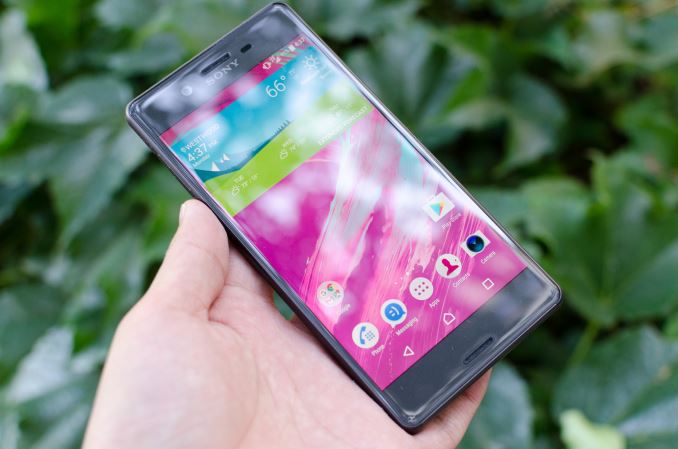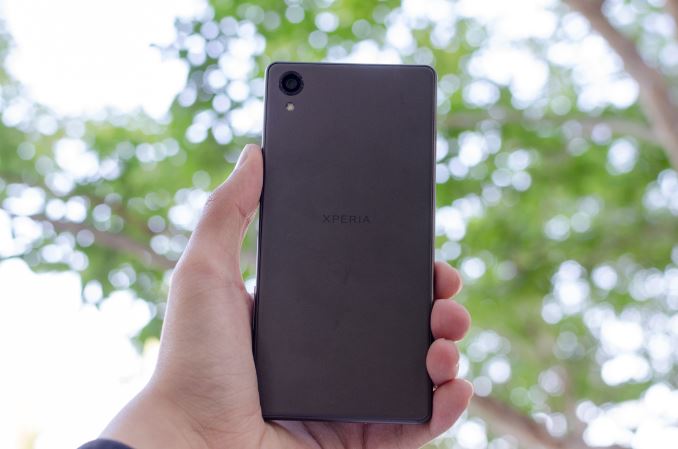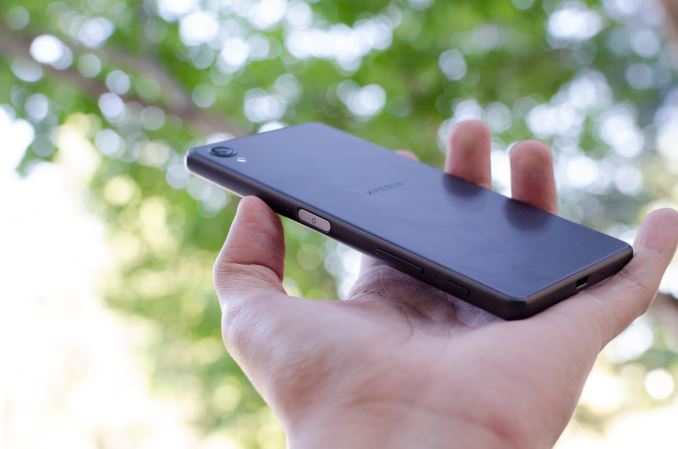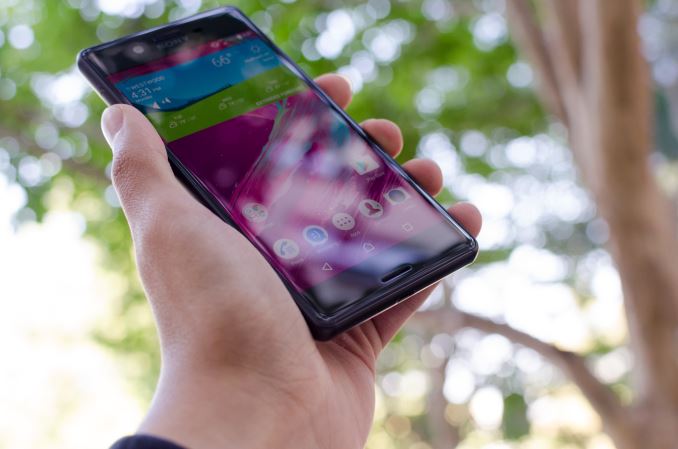The Sony Xperia X Preview
by Joshua Ho on May 31, 2016 8:02 AM EST- Posted in
- Smartphones
- Snapdragon
- Sony
- Qualcomm
- Mobile
- Xperia
- Snapdragon 650
- Xperia X

For some time now, Sony has been mostly absent from the US market. While we’ve seen devices here and there, there have been issues with keeping launches aligned, and for the most part by the time an Xperia phone launches in the US it’s already on the verge of being irrelevant as the 6 month launch cycle of Xperia phones in the past meant that slipping by even a few months resulted in noticeable deltas when comparing US and international models.
With the Xperia X, this all changes. Sony finally appears to be taking the US market seriously again, and I’ve spent the last few days using and testing the Xperia X to see just how it stacks up against the competition. The Xperia X is designed to unify the smartphone lineup to some extent, which makes some kind of sense when even I can’t really keep track of all the Sony smartphones other than the Z line. With the Xperia X Performance, X, XA, and XA Ultra there’s some semblance of sanity to the lineup. The X proper represents the high-end, while the XA line represents the mid-range.
While the astute readers may have noticed that we have tested Xperia phones before, we’ve never done a true review of one. To start reviewing the Xperia X, we can start with the usual spec sheet.
| Sony Xperia X | Sony Xperia X Performance | |
| SoC | Snapdragon 650 2x Cortex-A72 @ 1.8Ghz 4x Cortex-A53 @ 1.4GHz Adreno 510 (TSMC 28HPm) |
Snapdragon 820 2x Kryo @ 2.15GHz 2x Kryo @ 1.6GHz Adreno 530 (Samsung 14LPP) |
| RAM | 3GB LPDDR3 | 3GB LPDDR4 |
| NAND | 32/64GB NAND + microSD | 32/64GB NAND + microSD |
| Display | 5” 1080p Triluminos LCD |
5” 1080p Triluminos LCD |
| Network | 2G / 3G / 4G LTE (Category 7 LTE) | 2G / 3G / 4G LTE (Category 6/9 LTE) |
| Dimensions | 142.7 x 69.4 x 7.9mm, 153g | 143.7 x 70.4 x 8.7mm, 164g |
| Camera | 23MP Rear Facing w/ EIS, f/2.0, 1.12µm, 1/2.3" | 23MP Rear Facing w/ EIS, f/2.0, 1.12µm, 1/2.3" |
| 13MP Front Facing, f/2.0, 1.12µm | 13MP Front Facing, f/2.0, 1.12µm | |
| Battery | 2620 mAh (10.09 Whr) | 2700 mAh (10.4 Whr) |
| OS | Android 6 w/ Xperia UI (At Launch) |
Android 6 w/ Xperia UI (At Launch) |
| Connectivity | 802.11a/b/g/n/ac, BT 4.2, USB2.0,GPS/GLONASS, NFC |
802.11a/b/g/n/ac, BT 4.2, USB2.0,GPS/GLONASS, NFC |
| Fingerprint Sensor | Capacitive (non-US only) | Capacitive (non-US only) |
| SIM | NanoSIM | NanoSIM |
At a high level, the Xperia X is a well-balanced phone due to the 5” display, large camera sensor, but for the most part it’s a decidedly upper-mid-range phone. For the most part it’s pretty much a high-end phone other than the SoC, which is Qualcomm’s Snapdragon 650 SoC. For those unfamiliar with this SoC I would refer to our previous coverage on these SoCs for a high level overview. The battery does appear to be on the small side, but given the overall size and display size it’s in line with expectation. At first glance, the only real concern I have is the camera, as Sony lists this camera to have a 24mm equivalent focal length. While I try to keep an open mind with these things, this immediately jumps out as something concerning.
Of course, while spec sheets can give some idea for what to expect, there is a whole ocean of implementation details going from a spec sheet to an actual phone. To start, we can look at the design of the Xperia X, which is clearly an evolution of the Omni-Balance design that was first seen with the original Xperia Z. If you’ve used the Xperia Z3, the Xperia X will probably be quite familiar in feel, but instead of an aluminum frame and glass back, the Xperia X uses a plastic frame and an aluminum back that appears to have a sand-blasted anodized finish. I do have to admit it is a bit disappointing to me that Sony didn’t go all the way with an aluminum unibody design here, but it does feel easier to grip than the rather slippery Xperia Z3.
The plastic frame also has sensible button and port placement, which is good to see as previous Xperia smartphones were profoundly strange in that respect. The microUSB port is on the bottom of the phone, the combined SIM/microSD tray on the left side when viewed from the front, and the power button is placed high enough that if you hold the phone with your right hand your thumb should be approximately in the correct position to easily access it. This power button also doubles as a fingerprint scanner for international units but not US ones, which has been surprisingly fast when it works and has a firm feel unlike the somewhat loose fingerprint scanner on the LG G5. The volume rocker and two-stage camera button are just below the power button, and for the most part I don’t really have any issues with the placement here. The feel of the buttons is solid here and there’s no creep or take-up before the break. The camera button works, but the feel of the first stage isn’t very consistent as if your finger placement varies it won’t feel the same, and the break of the second stage feels a bit springy if you’re used to something like the Lumia 1020’s camera button.
The front of the phone is very much reminiscent of the Xperia Z3, as the dual front-facing speakers have a similar design and Sony continues to use on screen buttons here which does have a fairly noticeable effect on usable screen space, although I’m not really allowed to tear down the phone to see whether this phone places the display driver at the top to allow for capacitive buttons to increase usable screen space.
Overall, the design of the Xperia X is solid. There’s nothing really wrong with it, although the large amount of bezel on the bottom combined with the on screen buttons means that the typing ergonomics feels somewhat similar to the One M9. The plastic frame with all of its seams is a bit disconcerting for a 550 USD phone, but it doesn’t really have a material impact on in-hand feel. Again, I think an all-aluminum unibody would probably make it feel a lot better, but for what it is I don’t have any complaints.














45 Comments
View All Comments
grayson_carr - Tuesday, May 31, 2016 - link
Just please don't judge the overall performance of a phone solely based on how fast it opens apps. I have seen plenty of phones that open apps super fast, but bog down and drop frames while scrolling like crazy. I would rather have a phone that takes a split second longer to open apps and is able to maintain a consistent 60 fps when scrolling.techcrazy - Wednesday, June 1, 2016 - link
Its really good at maintaining frames while scrolling too. You can see multiple videos on youtube how good their performance is.DanD85 - Tuesday, May 31, 2016 - link
I gave up on Sony phones several years ago. Used to be a fan but with the coming of alternatives from young & aggressive Chinese manufacturers, Sony's handsets specs and prices don't make sense anymore. They just priced themselves out of the market, they initially ask a high price but because not enough idiots buy at that price, it drops like a rock several months later. If Sony keeps doing this, losing money is what they gonna get.fanofanand - Thursday, June 2, 2016 - link
I think the market for $400+ phones is going to drastically shrink over the next few years, as even basic/midrange phones are more than adequate for 98% of the population's use cases. With increased competition in the low/mid range I expect we will start seeing a lower premium for additional storage, which will be a game changer. This phone appears to be terrific, but at a price that is more 2012 than 2016.FastCarsLike - Tuesday, May 31, 2016 - link
Sony said they where going to make a 4K display with supposedly a large screen. Turned out it's a iPhone clone that runs android. I'm fine with people who use/want small screens, but historically Sony has always made large displays. This is why I am stuck buying every samsung note rendition, nobody gets that we want a phablet, not a tiny little iphone toy.ToTTenTranz - Tuesday, May 31, 2016 - link
Are we still getting a full review of the HTC 10?JoshHo - Tuesday, May 31, 2016 - link
Yes.Impulses - Tuesday, May 31, 2016 - link
Switching their lineup from Z to X just made it more confusing... Now there's an "X Performance" with an 820? Way to destroy the current model scheme right off the bat. And if the normal X is priced like a flagship what's the X Perf gonna cost?I almost bought the Z3/5 Compact a few times, in large part because of their small size and battery life... But I would've had to switch carriers to do so and they had no Qi or OIS for video, unlike my Nexus.
I'm not sure the X will be as alluring if they're trying to ramp prices up while at the same time cutting corners on the build and storage. The HTC 10 remains the most attractive upgrade choice for me, prolly holding out for Moto or this year's N5 refresh tho.
Coup27 - Thursday, June 2, 2016 - link
"Switching their lineup from Z to X just made it more confusing... Now there's an "X Performance" with an 820? Way to destroy the current model scheme right off the bat. And if the normal X is priced like a flagship what's the X Perf gonna cost?"+1. Had a Z3 international for nearly 2 years and it's been an amazing phone. Converted many people to Z3 compact's and Z5 compacts and considering a Z5 myself to replace my Z3.
But I am a bit lost on what Sony are doing at the moment. I think killing the Z line and replacing it with something with lots of X's and silly names like "performance" doesn't make a heap of sense. I did see an X in a shop the other day and it was a nice phone. I don't think the X Performance is the replacement for the Z5, I think something else will be announced at IFA in September, Heaven knows what it'll cost though..
NtAbs2000 - Tuesday, June 7, 2016 - link
Why get confused, Sony and Moto just agreed to swap lol.Sony X, Moto Z